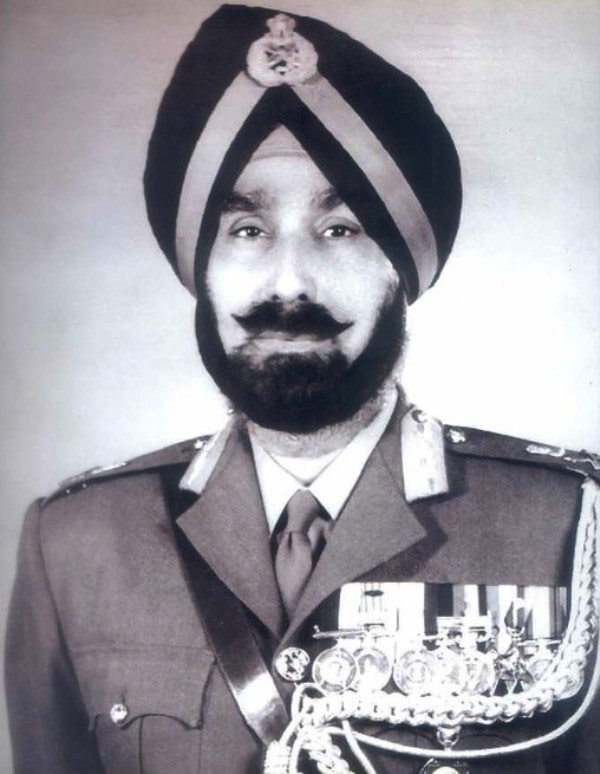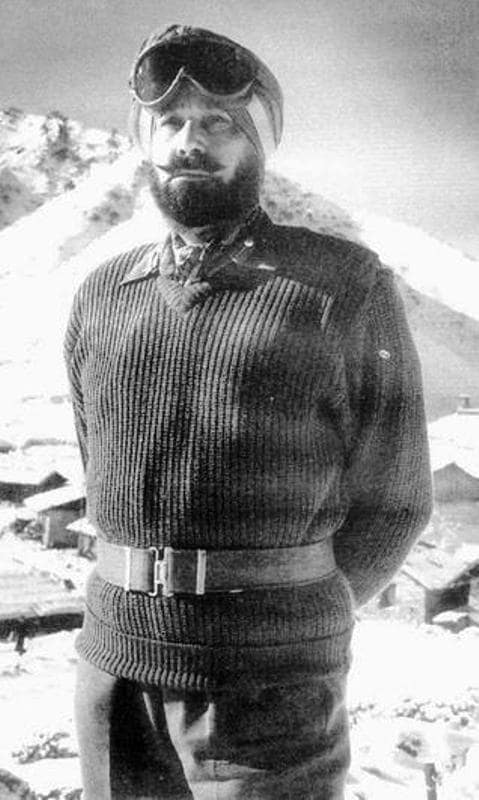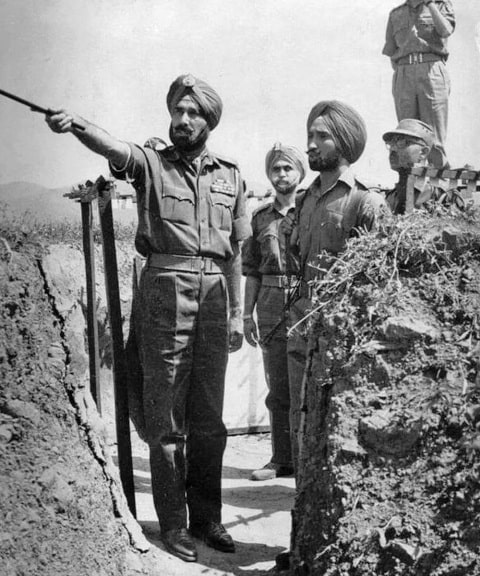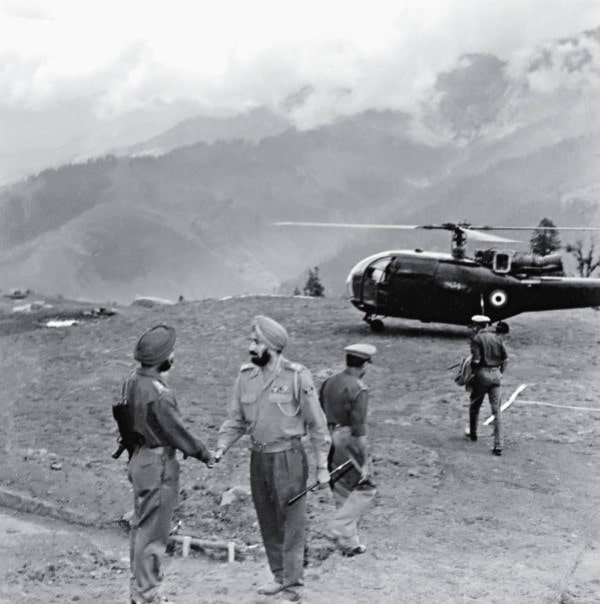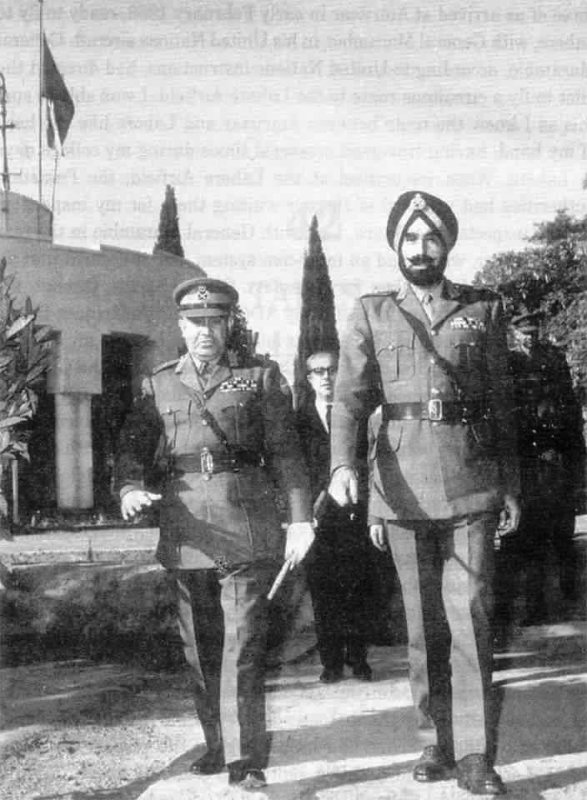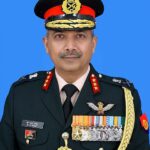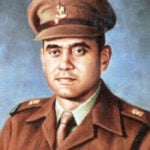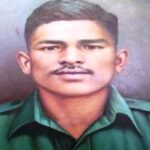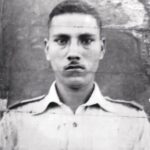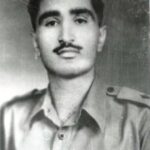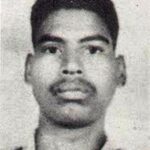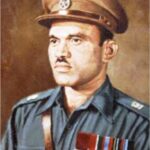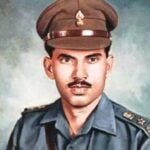Harbaksh Singh Age, Death, Wife, Children, Family, Biography & More
| Bio/Wiki | |
|---|---|
| Profession | Retired Indian Army officer |
| Famous for | Being the Western Army commander during the 1965 India-Pakistan War |
| Physical Stats & More | |
| Height (approx.) | in centimeters- 185 cm in meters- 1.85 m in feet & inches- 6’ 1" |
| Eye Colour | Dark Brown |
| Hair Colour | Salt and Pepper |
| Military Career | |
| Service/Branch | Indian Army |
| Rank | Lieutenant General |
| Service Years | 15 July 1935 - September 1969 |
| Unit | • Argyll and Sutherland Highlanders (15 July 1935 - 19 August 1936) • 5th Battalion of the 11th Sikh Regiment (19 August 1936 - April 1946) • 4th Battalion of the 11th Sikh Regiment (renamed as 1 Sikh after independence) (April 1946 - September 1969) |
| Service Number | IC 31 |
| Commands | • Commanding Officer of 1 Sikh • Deputy Commandant of the 161 Infantry Brigade • Deputy Commandant of the Indian Military Academy • Director of the Infantry at the Army Headquarters • General Officer Commanding (GOC) of the 27th Infantry Division • Chief of Staff of the Western Command • Commander of the Indian Army's 4 Corps (Gajraj Corps) • Commander of the Indian Army's 33 Corps in Shillong • General Officer Commanding (GOC) of the Western Command |
| Awards, Honours, Achievements | • India’s third-highest military award, Vir Chakra by the Government of India (1948) • India’s third-highest civilian award, Padma Bhushan, by the Government in India (1966) • India’s second-highest civilian award, Padma Vibhushan, by the Government in India (1970) |
| Personal Life | |
| Date of Birth | 1 October 1913 (Wednesday) |
| Birthplace | Badrukhan village, Sangrur, Jind State, British India (now Haryana, India) |
| Date of Death | 14 November 1999 |
| Place of Death | New Delhi |
| Age (at the time of death) | 86 Years |
| Death Cause | Natural causes [1]goldentempleamritsar.org |
| Zodiac sign | Libra |
| Nationality | • British Indian (1913-1947) • Indian (1947-1999) |
| Hometown | Badrukhan village, Sangrur, Punjab |
| School | Ranbir High School, Sangrur |
| College/University | Government College, Lahore |
| Educational Qualification | He was a graduate of the Government College, Lahore [2]In the Line of Duty: A Soldier Remembers by Lt Gen Harbaksh Singh |
| Religion | Sikhism [3]Hindustan Times |
| Address | 1, Palam Marg, Vasant Vihar, New Delhi – 110057, India |
| Relationships & More | |
| Marital Status (at the time of death) | Married |
| Family | |
| Wife/Spouse | Sanam Harbaksh Singh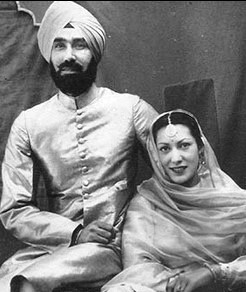 |
| Children | Daughter- Harmala Kaur Gupta (social activist)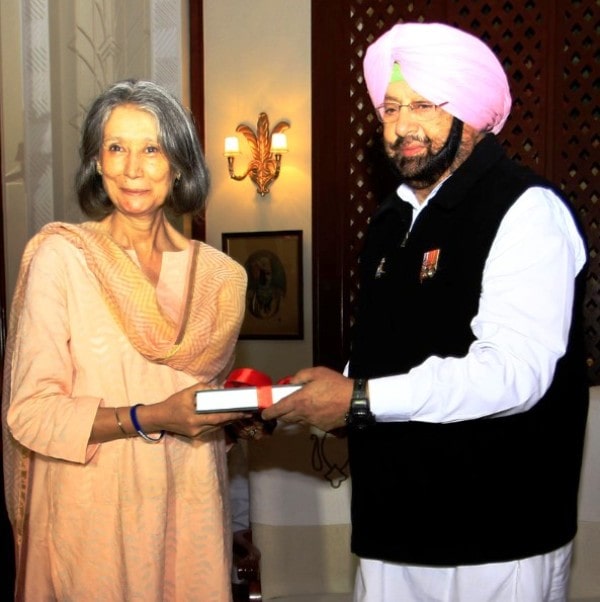 |
| Parents | Father- Harnam Singh (doctor, former British Indian Army soldier) |
| Siblings | Brother- Lieutenant Colonel Gurbaksh Singh (former officer in the Jind Infantry, former commander of the Indian National Army) Note: Harbaksh Singh was the youngest amongst his seven siblings. |
Some Lesser Known Facts About Harbaksh Singh
- Harbaksh Singh (1919-1933) was a retired lieutenant general of the Indian Army. He is not only known for receiving a Vir Chakra during the 1947-48 India-Pakistan war but also for commanding the Indian Army’s Western Command during the 1965 India-Pakistan War. Harbaksh Singh died in New Delhi on 14 November 1999 due to natural causes.
- After completing his formal education, in 1933, Harbaksh Singh passed the Indian Military Academy’s (IMA) entrance examination and attended the first batch of officers who trained at the IMA.
- Harbaksh Singh’s career as an officer began in the British Indian Army when he joined the Argyll and Sutherland Highlanders after completing his training at the Indian Military Academy (IMA) on 15 July 1935.
- From 15 July 1935 to 19 August 1936, Harbaksh Singh participated in military operations conducted by the Argyll and Sutherland Highlanders on the North-West Frontier border.
- On 19 August 1936, Harbaksh Singh was transferred to the 5th Battalion of the 11th Sikh Regiment (5/11 Sikh) at Aurangabad, where he served at the battalion headquarters as a Signal platoon commander till 1937.
- In 1938, he became the Alpha Company commander when his battalion was moved to Razmak in the North-West Frontier Province (NWFP). [4]In the Line of Duty: A Soldier Remembers by Lt Gen Harbaksh Singh
- Harbaksh Singh, along with his battalion, was moved to Kuantan, British Malaya (now Malaysia) after Japan declared war on Britain during the second world war in 1939.
- On 5 February 1942, after the Japanese attacked and captured Kuantan, the British commonwealth troops, including Harbaksh Singh and his battalion, were forced to retreat to Singapore; however, while making a retreat, Harbaksh Singh’s convoy was ambushed by the Imperial Japanese Army as a result of which he was severely wounded but somehow he was evacuated by the troops from the ambush site and was admitted to the Alexandra Hospital in Singapore.
- Harbaksh Singh was taken as a Prisoner of War (PoW) by the Japanese forces after the British Army surrendered in Singapore on 15 February 1942 after which he was sent to the Kluang Labour Camp, where the captured British troops were forced to work by the Japanese Army in horrifying conditions. At the camp, Harbaksh Singh contracted life-threatening diseases like beriberi and typhoid, which weakened him. There, Harbaksh Singh was held prisoner with his elder brother, lieutenant colonel Gurbaksh Singh, who, later on, joined Subhash Chandra Bose’s Indian National Army and became a commander there.
- In 1945, after the end of the second world war, Harbaksh Singh returned to India after which he underwent treatment for typhoid and beriberi at Ambala Military Hospital till 1946.
- In 1946, after getting discharged from the hospital, Harbaksh Singh was sent to Dehradun, where he attended the Unit Commander’s Course (UCC) after which he was sent to the 4th Battalion of the 11th Sikh Regiment (4/11 Sikh) as its second in command at Campbellpur (now in Attock, Pakistan).
- In February 1947, Harbaksh Singh was selected to attend the British Indian Army’s Staff College’s long course in Quetta, Balochistan and was among the first few Indian officers to have been chosen for the long course. [5]In the Line of Duty: A Soldier Remembers by Lt Gen Harbaksh Singh After completing the Staff College course, Harbaksh Singh was sent to the Eastern Command of the British Indian Army as GSO-1 (operations and training).
- When the war between India and Pakistan broke out in September 1947, Harbaksh Singh was posted to the 161 Infantry Brigade as its deputy commandant. When Harbaksh Singh came to know about the death of lieutenant colonel Dewan Ranjit Rai, who was the then commanding officer of 1 Sikh (formerly known as 4/11 Sikh), he volunteered to get demoted and step down from his appointment as the deputy commandant of the 161 Infantry Brigade to take over the command of his unit; however, his request was denied by the Indian Army.
- Harbaksh Singh, as a deputy commandant, formulated a plan with the help of which the Indian Army’s 1 Sikh and 4 Kumaon managed to capture the strategically important Shelatang Bridge on 7 November 1947. Reportedly, the capturing of the bridge by the Indian forces turned the tide of the war in India’s favour.
- In 1947, 1 Sikh suffered massive casualties while attempting to capture Uri, a town in Kashmir, from Pakistan. After hearing about the casualties suffered by 1 Sikh, Harbaksh Singh once again requested the Indian Army to demote him so that he could take over the command of the battalion; however, this time, the Indian Army accepted his request, and Harbaksh assumed the command of 1 Sikh on 12 December 1947 after which he was ordered to move his unit to attack and capture Pharkian Gali from the enemy.
- In 1948, Harbaksh Singh assumed command of the 163 Infantry Brigade as a Brigadier. Under his leadership, the 163 Infantry Brigade played a vital role in capturing Tithwal, a strategically important village, from the Pakistani invaders.
- After a ceasefire agreement was signed between India and Pakistan, marking the end of hostilities between India and Pakistan, in 1948, Harbaksh Singh was posted as a deputy commandant at the Indian Military Academy at Dehradun after which he took over the post of Director of the Infantry at the Army Headquarter in New Delhi.
- In 1957, Harbaksh Singh was selected by the Indian Army and sent to the United Kingdom, where he attended a military course at the Imperial Defence College (now Royal College of Defence Studies).
- After the end of the second world war, the German Army was disbanded; however, in 1957, the German Army was re-raised after which Harbaksh Singh was sent to Germany on an attachment with the newly raised German Army. [6]In the Line of Duty: A Soldier Remembers by Lt Gen Harbaksh Singh
- After returning to India from Germany, Harbaksh Singh was given the command of the 5th Infantry Division after which he went on to command the 27th Infantry Division.
- From July 1962 to October 1962, Harbaksh Singh served at the Western Command headquarters as chief of staff.
- In 1962, when the war between India and China broke out, Harbaksh Singh was sent to take over the command of the Tezpur-based 4 Corps (now known as the Gajraj Corps) of the Indian Army; however, according to an article titled Remembering Lt Gen Harbaksh Singh, written by the former CM of Punjab Captain Amarinder Singh, when the Chinese invasion of the North-East Frontier Agency (NEFA) and Laddakh was in full swing, the Indian government ordered the Indian Army to replace Harbaksh Singh with Lt Gen B. M. Kaul, who reportedly shared a very close relationship with the former Indian Prime Minister Jawaharlal Nehru. In his article, he further said that had Harbaksh Singh remained the GOC of 4 Corps, the outcome of the 1962 Sino-Indian War would have been different. Talking about it, in his article, Amrinder Singh said,
After commanding the 5 Division and the 4 Corps for a while, during the Chinese operations of 1962 in India, where many soldiers believe that had he been allowed to command the Corps during the second phase of the battle by the Chinese which started on November 20, the situation would have been quite different in NEFA and the surroundings. Sadly for the Corps, their old GOC, General B.M Kaul, was sent back to command them, from a sick bed in Delhi, by DM Krishna Menon, the then Defence Minister. General Harbakhsh Singh was then given command of 33 Corps at Siliguri and he finally took over as the Western Army Commander in November 1964.”
- Harbaksh Singh took over the command of the Western Command of the Indian Army after he became a lieutenant general in 1964.
- When the hostilities between India and Pakistan broke out in 1965, Harbaksh Singh was ordered to defend Amritsar from any Pakistani attack. Harbaksh Singh, as the GOC of Western Command, was not only given the charge of the defence of Punjab but was also given the charge of the defence of Indian territory stretching up to Ladakh.
- Reportedly, Harbaksh Singh devised a plan during the 1965 war, which resulted in Indian forces gaining control over the strategically important Point 13620, a mountain peak in Kargil, which boosted the morale of the Indian troops.
- Harbaksh Singh retired from the Indian Army in September 1969.
- According to several media sources, after the end of the 1962 Sino-Indian war, Harbaksh Singh, as a senior ranking officer, formulated several policies for the Indian Army, which not only strengthened its arsenal but also strengthened its organisational structure.
- In 1991, Harbaksh Singh authored War Despatches: Indo–Pak Conflict 1965, a military strategy book. According to him, through the book, he wanted to share his war experiences with the new generation of officers in the Indian military. Talking about his book, Harbaksh Singh said,
The object of writing this book at the fag-end of my life is to pass on my experiences to the younger generation of officers who are now coming up to serve the country. I do not consider that I have had an ideal life, but I can say for certain that I was very lucky to have had a wide range of military experiences, particularly in the Indian army, which do not come to the lot of most people.”
- During an interview, Harbaksh Singh’s daughter, Harmala Kaur Gupta, said that Harbaksh Singh liked to play sports like horse riding, swimming, and field hockey. She further said that her father wanted to pursue a professional career in field hockey and wished to represent India in hockey at the Olympics; however, he could not accomplish his dreams due to the beginning of the second world war.
- While serving as the General Officer Commanding (GOC) of the Western Command, Lt Gen Harbaksh Singh appointed Captain Amarinder Singh, the former Chief Minister of Punjab, as his Aide-De-Camp (ADC).
- According to media sources, after the hostilities between India and Pakistan ceased, Harbaksh Singh ordered the Indian Army to repair and repaint the damaged mosques on the seized Pakistani territory before giving the captured land back to Pakistan.
References/Sources:

